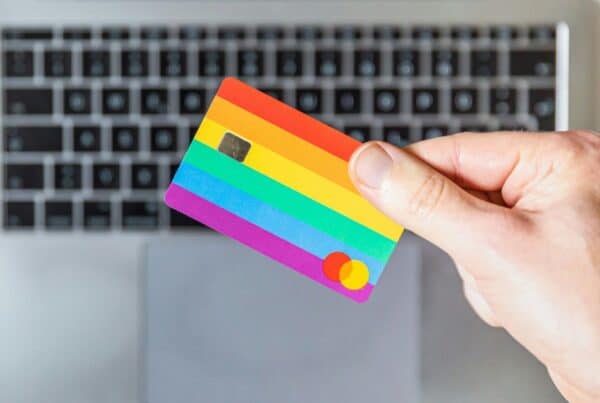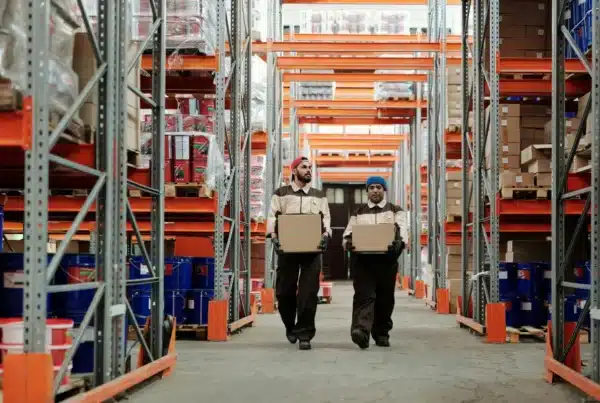
The writing is on the wall: Inside sales is the future — and an inevitable one at that.
Inside sales has grown exponentially since 2020. According to SalesLoft, the market has advanced 300% faster than traditional sales — a trend that shows no sign of slowing down.
It’s easy to see why. When businesses transition to a virtual approach, they’re able to sell seamlessly to their buyers, at a lowered cost. In fact, companies with sales teams dominated by inside reps have a 9.8% higher quota than their counterparts.
With an immense amount of change in such a short time, businesses need to adapt to survive, now more than ever. In this blog, we explore five key trends for the future of inside sales, and our predictions for the progression of the sales market.
What does the future of sales look like?
All evidence points toward a continued shift to inside sales. From 2017 to 2019 the industry saw a 6% average transition to remote work from field sales, per Gartner. That means, as field sales representatives left outside roles, they weren’t replaced with a like-for-like candidate. Their role was repackaged as an inside sales position.
In 2021, that shift increased to a staggering 33%. You’d be forgiven for believing that the COVID-19 pandemic initiated the decline of the field sales approach, because it’s true — to an extent.
The pandemic removed the option for field selling and forced sellers to work remotely. It was a necessity — not a choice. What wasn’t predicted about that sharp increase until more recently was the longevity. Currently, 54% of employees want to remain at home, working on a hybrid, flexible or agile basis.
An even higher percentage of CFOs want to retain that model due to the cost efficiencies and benefits in recruitment and retention. Working inside extends reach, meaning teams can be built nationally or even across the globe.
1. Buyer habits will continue to move toward digital
Buyers have been moving toward digital for the last decade. Through the power of the internet, they’ve become self-sufficient in researching purchasing decisions.
There’s no longer an expectation for the “traveling salesman,” wine-and-dine experience. Modern buyers expect a seamless, digital, customer-first experience. One that’s entirely on their terms. This virtual approach to selling has become second nature in B2B sales, just as e-commerce has boomed in B2C.
This isn’t a new phenomenon — or even entirely due to the impact of COVID. Business buyer behaviors tend to follow consumer buyer behaviors. In fact, 2020 data from Mckinsey suggested nearly 75% of customers preferred not to spend time meeting face-to-face with sellers. The universal truth is, customers — whether at home or at work — want to buy online.
The only difference between B2C and B2B behaviors is convenience. At home, buyers take a credit card and purchase. It isn’t that simple yet in business terms. Whether due to business purchasing procedures or procurements, the digital sales process causes a lag. B2B buyers are rarely armed with a company credit card. The majority of purchases go on an invoice, then through a statement of work or contract.
But, as the shift to home working grows, it’s only a matter of time before this changes. That whole process is what takes time to catch up. Not the buyer behavior, which is already in place. It’s their ability to demonstrate it in the workplace that takes longer.
Remote sales forces are now a reality. That doesn’t just impact the nature of selling, but also buying. Clients, prospects, buyers aren’t all office-based anymore. You can’t visit them at their home and expect to make a sale sitting on their couch. Just as 54% of employees want to work from home, the same can be said of buyers. They’re also employees of a company.
2. AI and automation
Contact ability through media has evolved dramatically. Just as marketing firms have powered their results through intelligent tech and artificial intelligence, inside sales has quickly followed suit.
Now, business intelligence is more powerful, meaningful and accessible than ever. A wide range of plug-and-play customer relationship management (CRM) systems like Salesforce have become widespread across the FT100 and small startups alike. Sales software developers are investing more time and effort into the creative side, and AI has had a huge part to play in that.
Leading software brands are investing heavily in tools that quantify prospecting and engagement. By way of example, Intonation AI tracking has become invaluable for sales teams, but this intelligence is now starting to move into visual engagement and visual interaction.
Looking ahead, we can only expect machine learning and AI to improve interactions between customers and inside sales teams. This could be through automation, data management or even engagement analytics. If you’re not considering how you can use your tech stack to enhance customer interactions, you’re already behind.
3. The sales cycle will shorten
According to HubSpot’s 2021 Buyer Experience Study, 80% of SaaS buyers say the buying process is cumbersome. There are too many steps. It’s too complicated. There’s too much paperwork. We’ve heard it all before.
B2B buying is only now catching up to the digital behaviors B2C buyers are accustomed to. In fact, recent research by CEB’s Marketing Leadership Council shows B2B buyers complete nearly 60% of the buying cycle before even engaging with a sales rep.
With rich research potential at their fingertips, buyers know what they want — and where to get it. Not only does this naturally shorten the sales cycle with an expected increase in inbound inquiries, it also makes the investment into CX and lead qualification a critical part of capacity planning.
4. Marketing’s influence will only grow
In the early days of sales and marketing, each discipline would be held accountable for their own targets. Activity, connection and success metrics for sales teams. Traffic and lead source for marketing.
Today, with the omnichannel approach to buying/selling, marketing has a huge role to play in the sales cycle. Without a shared idea of what success looks like and how to measure it, there’s no alignment for business goals.
Typical “marketing-specific” channels such as social media, web and content are ever-improving as lead generation resources. The fact that 60% of the B2B buying cycle is completed independently by the buyer is due to the strength of marketing, and the resources available to the consumer.
Future lead generation efforts will likely be dictated by combined efforts from successful inside sales and marketing. They will attract and engage prospects on their terms, whether that’s by phone, email, SMS or other new social selling channels like TikTok.
Now, more than ever, sales and marketing teams need to foster better collaboration to ensure they are both accountable for the same end-goal. The only way to achieve that is to be open and honest about goals and results from the onset.
5. Personalization will only grow in importance
In inside sales, “the riches are in the niches.” Those who personalize their prospecting outreach always see a better return on effort. When you approach prospecting too broadly and try to appeal to everyone, the opposite happens. You end up resonating with no one.
There’s a huge amount of research and money invested in improving sales tools — from lead capturing and CRM all the way through to AI and engagement data. These tools are now far better at sourcing, quantifying and displaying human behavior.
Human behavior isn’t about filling in surveys anymore. It’s about considering the way prospects respond to specific sales channels and activities through tonality analysis and visual interaction. The difference today is that human data is being combined. It’s less about the group you’re selling to and more about the person. Not just personalized around their job title either. Personalized around the human being sold to.
Armed with rich data about each buyer, sales reps can shorten the time it takes to prospect effectively. This saves wasted energy on chasing the wrong leads, and maximizes genuine pipeline opportunities. Equally, as buyers expect personalization to become an inherent part of B2B outreach, it will eventually become second nature for sellers. It’s worth investing in the right tools to enable personalization, before your business is left behind.
Final thoughts
The “uncertainty” of the inside sales industry is a myth. With logical research and assessments of current market trends, business leaders and sellers can monitor the direction of the market, and prepare for it. The proof is all in the data.
If you’re monitoring an industry trend, create a data source for that. Your assumptions are nothing without quantification. Experimentation is also critical. Assign a portion of your headcount to messaging experimentation and test your assumptions — there’s absolutely no value in rolling out unverified hunches.

Originally from Iver in the United Kingdom, Christina has 25+ years in sales and operations, the majority of which has been at board level. Those who have met Christina would agree that she strives for operational excellence on a daily basis, consistently working in her role as SVP of Sales Services to develop the individuals and teams as a whole.



